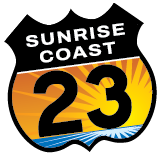Fig. 1 Apple branch showing alternate branching pattern, lenticels (little light-colored dashes / spots), and spurs (short, stubby branches bearing the leaves).
Fig. 2 Apple leaves growing from a spur on the twig with a few lenticels (the little dash lines on the twig below the spur).
Fig. 4 Apple branches against the sky showing their darkness and “messiness” on the old parts of tree (specific to the ABP-NTA apple trees, which are old).
- Twigs with alternate buds and spurs with leaves (Fig. 1)
- New-growth twigs reddish / brown-ish and with little dashes / spots (lenticels) (Fig. 1)
- Leaves on older twigs growing from spurs (short, compressed twigs); leaves oval and serrated (Fig. 1 and 2)
- Flowers: showy with pink buds and white - pink flowers (Fig. 3)
- Fruit: apples
- Trunks usually with low branches
- Only a few stunted, old, apples trees with lots of dead branches (Fig. 4) on ABP-NTA, although they all have new shoots growing from the base of the trees (Fig 5) and they are producing flowers near the top as well.
- Young shoots reddish with obvious lenticels (Fig. 6)
- Historical uses: primarily fruit, then carving, turnery, small utensils
This information is basic by design and does not include total botanical information about each species (kind of tree). Rather, only more or less easily observable features, mostly throughout the seasons, are listed for each numbered tree in the Alabaster Bike Path-Native Tree Arboretum (ABP-NTA). Some of the species have distinctive flowers and fruits which are included; however, there are years of heavy flowering / fruiting and years of little or no flowering / fruiting. Because all natural populations have variation, it is best to look at several examples of each characteristic. All photos (except where noted) and all text by sczaika. Historical uses from Hough, R.B. The Wood Book. Royal Botanical Gardens. The preeminent classic botanical source for Michigan (mostly native) trees is Barnes, B. V. and W. H. Wagner, Jr. 2004. Michigan Trees: A Guide to the Trees of Michigan and the Great Lakes Region. The University of Michigan Press. A supplemental resource is Kershaw, L. 2006. Trees of Michigan including Tall Shrubs. Lone Pine Publishing International. A useful field guide is Tekiela, S. 2002. Trees of Michigan Field Guide. Adventure Publications, Inc. Cambridge, MN
Included In:






